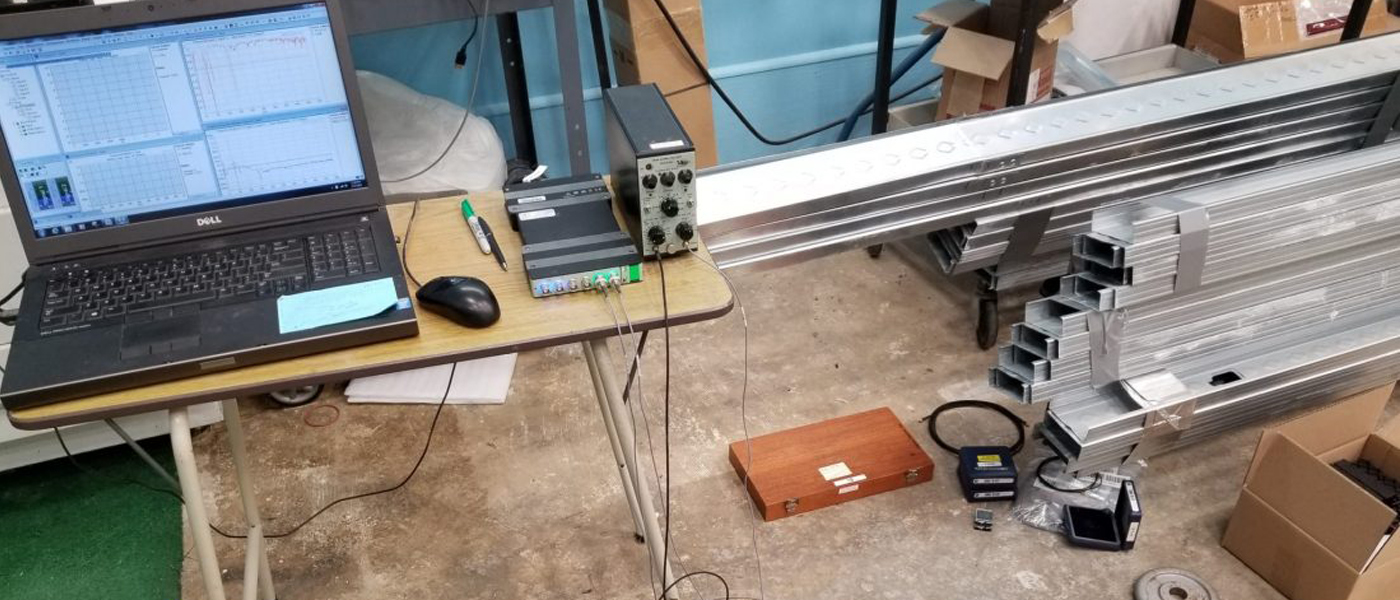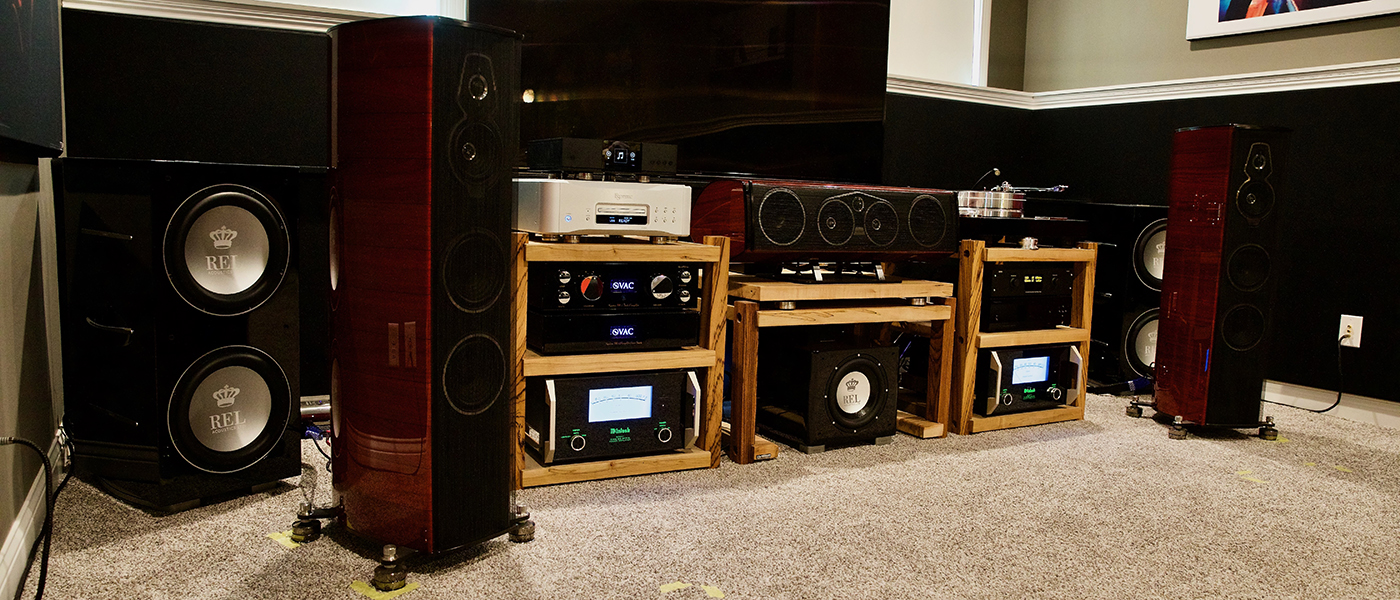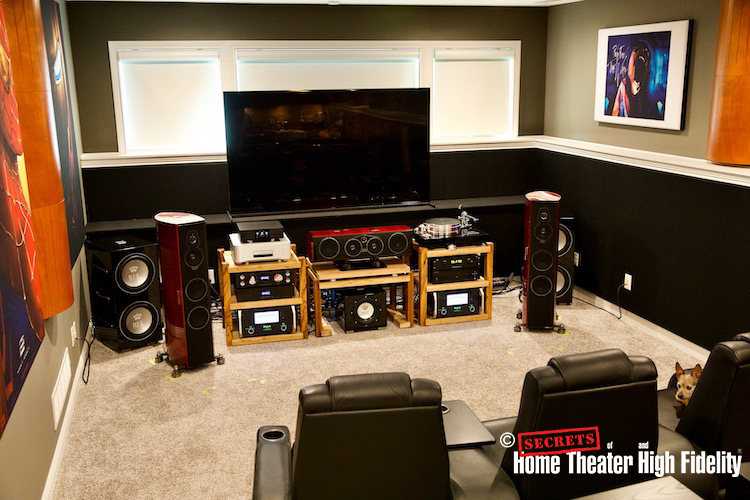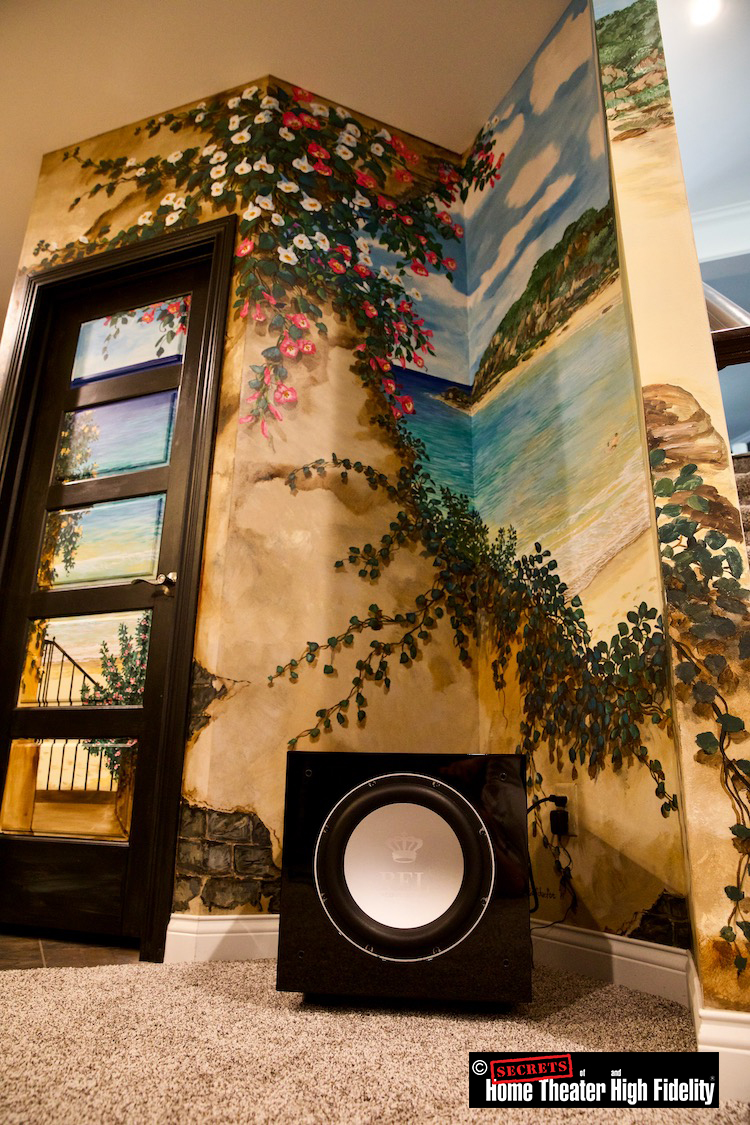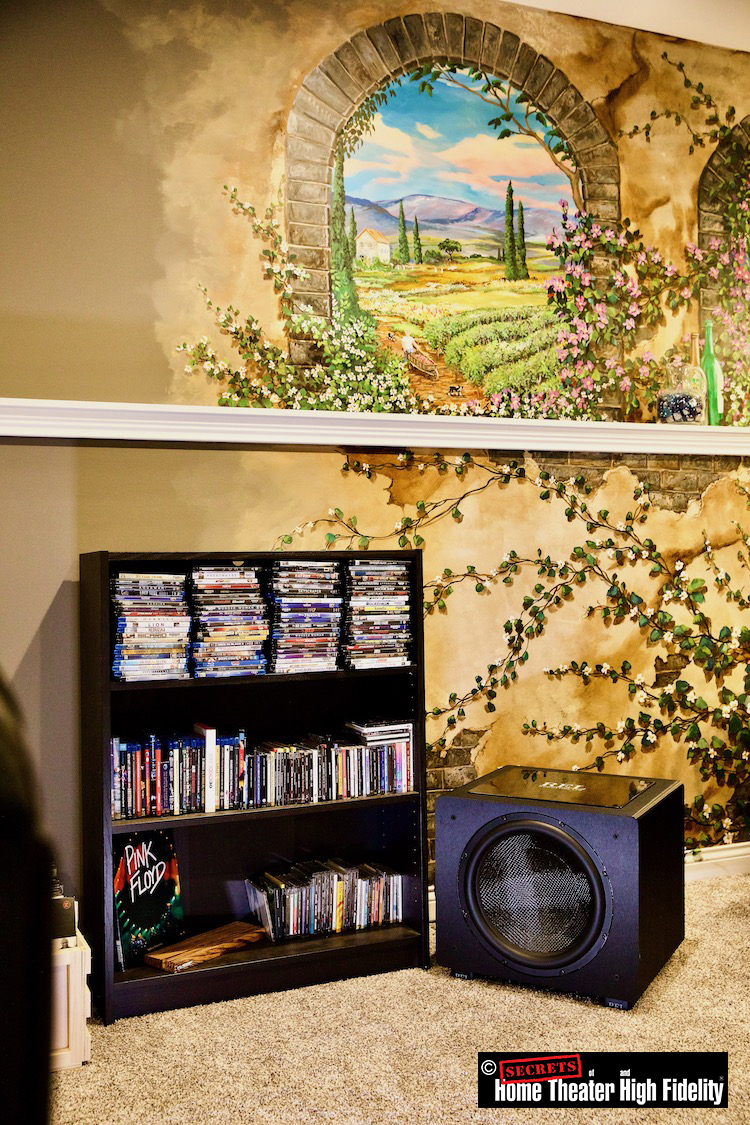To start, let us first take a look at the subwoofer and how it works within a home theater environment. The subwoofer is there to play the bass that most speakers in the system are incapable of reaching. Even if you have large speakers, chances are that they’re simply not going to be able to play the really deep bass that we find hiding within the movie recording (think explosions, car crashes, thunder, etc.). The subwoofer’s sole responsibility is to play these low frequencies and to move enough air in your listening space to give realistic levels of sound. Without proper bass, the soundtrack comes across as hollow or weak, and it can take away from the spatial cues that the recording engineers so carefully placed within the movie.
In most home systems, there is just one subwoofer to handle the bass requirements of the LFE (Low-Frequency Effects) channel. This would be the “.1” designation in a 5.1 system, and the other 5 channels consist of a left, right, and center channel up front, with 2 surround channels at the side or rear depending on the room setup. In addition to the LFE effects, the subwoofer also handles the low frequency found in the 5 other channels when speakers can’t reach those frequencies. In your modern (or older) surround sound processors, you set up the programming within the system, and select whether your speakers are “small” or “large”. The “large” designation is for those full-range speakers capable of reproducing frequencies below 30Hz or so (and most won’t go that low in real room environments). So, for any speakers that are set up as “small”, those low frequencies are then routed to the subwoofer. With this approach, you could have up to 5 separate channels, plus the .1 / LFE channel all sending their bass requirements to the subwoofer. That’s an awful lot to expect of one subwoofer to reproduce accurately, not to mention that the bass requirements for the surround speakers behind you are being routed to a subwoofer that’s in front of you. And when you step up to much more elaborate Dolby Atmos systems with side and rear speakers, in addition to the speakers in a 5.1 or 7.1 surround system, that taxes the ability of the subwoofer even more.
While the system example above can have a significant impact and sound very good, there are limitations in what it can achieve. While it can still create a lot of slam-factor that you can impress your friends with, it lacks the clarity and detail in the low frequencies, not to mention the spatial presentation or surround-sound effect.
Your next step up from here would be to add a secondary subwoofer that is typically placed behind the listening position, and diagonal from the subwoofer placement up front. This will most definitely help to even out the bass and add more sense of space. We’re not adding subwoofers simply to increase output (slam-factor), we’re adding subwoofers to reduce the sense of bass localization and to create more of an enveloping surround field. With the proper setup, a second subwoofer can add even more of an impact to your system.
Now that we have some basic setup principles established, let’s take a closer look at the initial design goals for home theater as taken from REL’s blog on system setup:
The fundamental premise of Dolby Digital was 5 independent channels of digital audio, each running full range, and each individually controllable for volume level and time delay. Add one more special effects channel for Low Bass (the LFE channel) and you have the makings of a revolutionary system for bringing screening room theater to the home.
But since we have shown in our example 5.1 system, we are not using 5 full-range speakers, so even with sending that information to just one subwoofer, we are not accomplishing the intent of the studio.
When looking at REL’s 3D concept, it’s quite simple on the surface because we are adding subwoofers to take the strain off just the one (or two) found in most systems. The goal is to allow the main left and right, the center, and the surround speakers to operate in full range by having a minimum of 3 speakers, but how in the world do we wire a system together to allow such a configuration?
As I discussed in greater detail in my review of the REL 212/SX Subwoofers, REL specializes in having its subwoofers connected at high-level as opposed to RCA connections. With this, you are typically connecting directly from the amplifier (or sometimes the speaker terminals) so that the subwoofer is receiving the exact same signal as the speaker it is connecting to. Given REL’s innovative design, this does not draw extra power from the amplifier and therefore is a safe connection. Surround-sound processors do not provide for subwoofer outputs for each individual channel; therefore, you must connect via high-level (speaker-level) to get your signal for that channel.
To accomplish this, however, the settings in your processor or AVR MUST be set to large, or full-range so that the subwoofer receives all the low-frequencies that are in the movie soundtrack. Yes, this means that your speakers are now receiving the same full range signal, but they’re incapable of reproducing those low frequencies, so you’re not going to damage them by sending them full range. Think of this as if you had a 2-channel stereo setup with small monitor speakers that can’t go down below 60Hz or so. The music has frequencies much lower than that recorded in it, but the speaker doesn’t care as it simply won’t try to reproduce them. Make sense?
To better understand REL’s high-level connection concept, let’s take a look at a few clips from one of their “System Thinking” articles found on their very informative website:
Ok, let’s jump in and explore what we’re doing in our High-Level Input. The High-Level cable we supply with all classic RELs, it connects to your power amplifier’s output terminals.
So, if we are connected to the amplifier and the speakers are connected to the amplifier, aren’t we drawing power from the amplifier? No. The REL’s input impedance is so high, higher than 100,000 ohms, that your power amplifier (or integrated amp, or receiver) sees zero drain to provide the REL with its signal. But what that incoming signal from your amp does supply is a signal identical to that feeding your speakers. Thus, the quality and signature of your interconnect cables, the dynamics, and tonal shadings of your power amp all contribute to the final sound you are used to hearing through your speakers.
The key here is that the sonic signature from the back half of your system is what we uniquely extract and deliver to the REL input filter in a way no one else seems able to manage. Many have tried, only to discover that what we do is incredibly difficult to duplicate. And that, friends, is the secret to REL’s High-Level Connection.
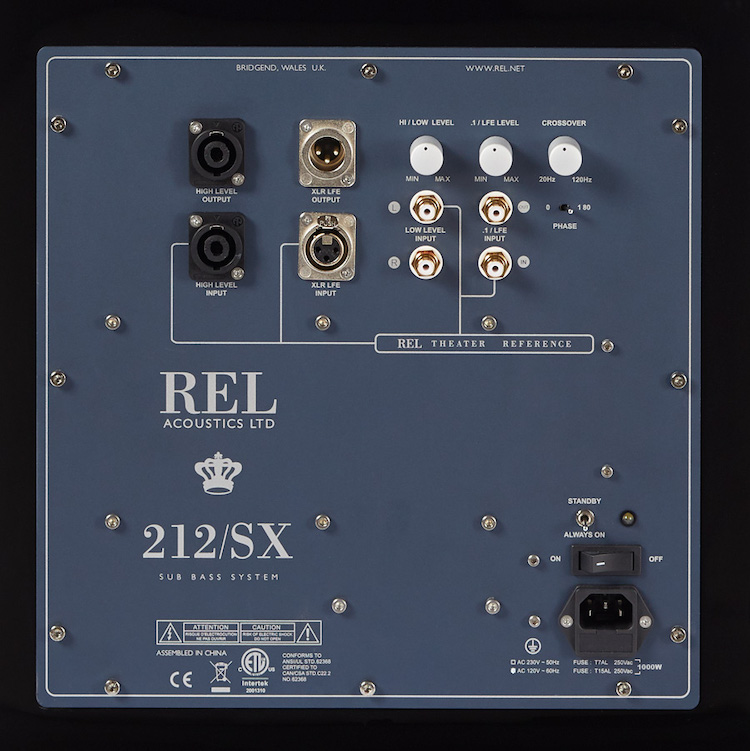 REL Subwoofer back panel with high-level inputs
REL Subwoofer back panel with high-level inputs
There are a variety of high-level connection options depending on what you’re ultimately connecting to, and REL provides diagrams and detailed information on their website for pretty much any type of connection that you may encounter. It is imperative that you find the proper connection!
Below is a connection diagram when using a pair of REL subwoofers with a pair of Monoblock Class A/B amplifiers.
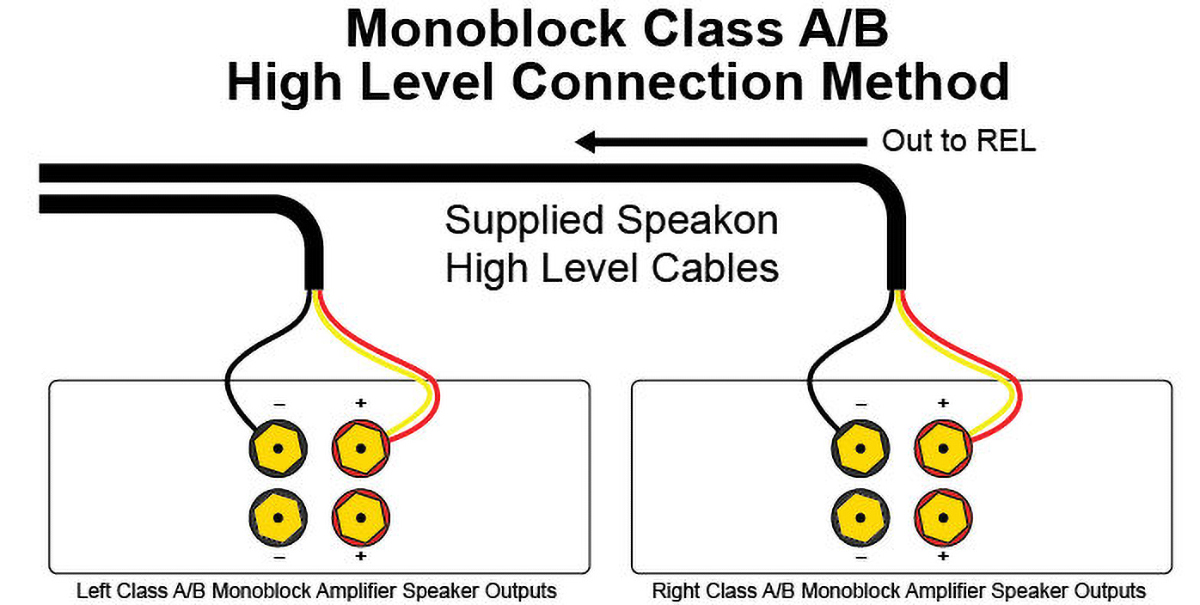 Connecting a pair of REL subwoofers with a pair of Monoblock Class A/B amplifiers
Connecting a pair of REL subwoofers with a pair of Monoblock Class A/B amplifiers
And here is the connection you would make for your center channel subwoofer to a Class A/B amp.
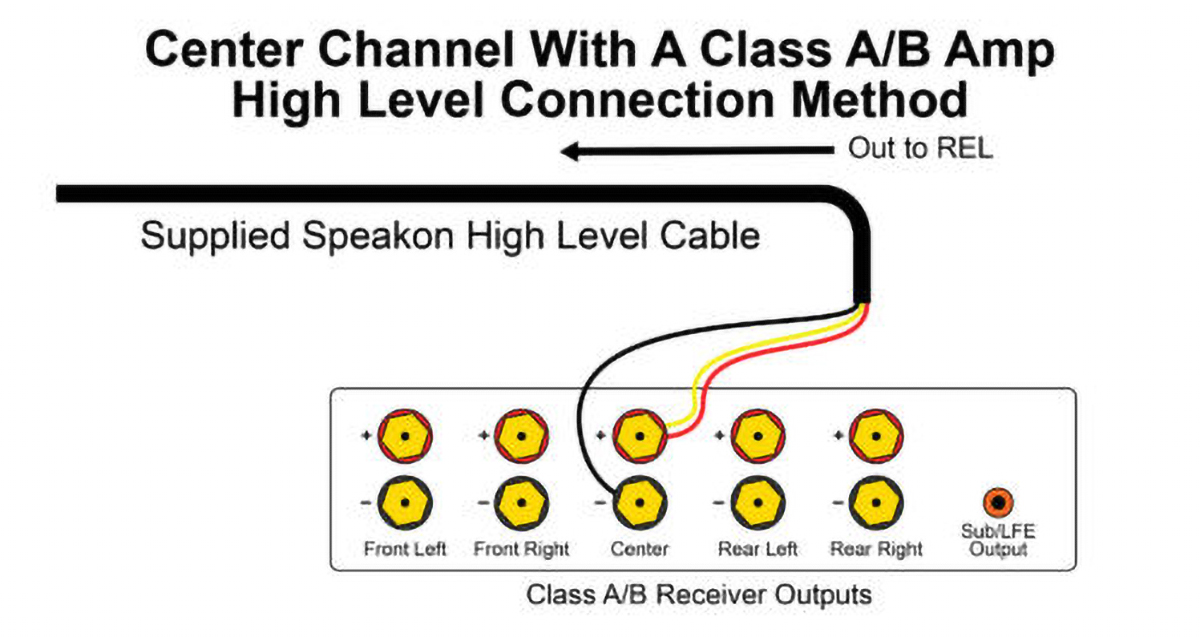 Connecting an REL subwoofer to a center channel amplifier output
Connecting an REL subwoofer to a center channel amplifier output
For the REL 3D system to be effective, you need at least 3 subwoofers. One of them (the biggest, most powerful) is going to be connected to your main left and right speakers, AND it is also going to be connected via RCA for the LFE input. This front / main subwoofer is going to handle all the low frequencies recorded within the left and right channels while at the same time it is reproducing all the heavy bass available in the LFE channel. As for the high-level connection, REL provides a cable with their subwoofers that have 4 non-terminated cables on one end that connect directly to the amplifier, and a Neutrik Speakon connector on the other that connects to your REL sub. REL provides a variety of connection tutorials on their website depending on the type of amplifier you are using, and it is highly recommended that REL users thoroughly check this out to make sure connections are made correctly.
The next subwoofer, and most likely your smallest, is going to be connected directly to the center channel, where most of your action is. The difference in center channel connections, however, is that you’ll most likely make the connection directly to the back of the speaker’s positive and negative binding posts. This makes it easy to connect the center channel with the subwoofer and have them close to one another. While placing the subwoofer directly underneath the center channel is preferred, it’s not always convenient. If it’s placed close, then you should be good to go.
Finally, you will want your second largest / most powerful speaker located behind the seating position and placed diagonally from the subwoofer at the front of the room. As with the front / main subwoofer, this one will be connected to the surround channel speakers via high-level, and it will be connected to the LFE channel via RCA connection.
Now we have a 3-sub system, with the main working with the main speakers and LFE, a center-channel sub handling center low-frequency signals exclusively, and a rear subwoofer connected to the surround speakers and LFE signal. Even with a 3-sub system like this one, you will achieve a level of accuracy, detail, and space that is worlds beyond what your 5.1 setup provided.
Enough theory, how about real-world use?
My venture into the REL 3D system started when I was working on my REL 212/SX review and subsequent research into the brand and conversations with REL Head Honcho John Hunter. REL does a tremendous job of educating customers through deep-dive articles and videos, and I found myself following the proverbial rabbit down the hole with all the fantastic information they provided. I have always prescribed to the old adage of “out-educating your competition”, as I have employed that with my own company. I took an immediate liking to REL’s approach as it is very similar to my own, and because of that, I wanted to do more than just a subwoofer review. After a few conversations with John, and a few visits to my house from REL’s Jerrad Perkins, I started to assemble my own REL 3D system.
My current system is Dolby Atmos, with 7 main speakers (L&R mains, center, surrounds, and rear), along with 6 ceiling/height speakers. For surround processing and amplification, I have a JBL Synthesis SDP-55 processor and 2 of their SDA-8300 amplifiers. Main L&R amplification is handled by McIntosh MC611 monoblocks. For main speakers I have a pair of Sonus faber Serafino Traditions, a Sonus faber Vox Tradition center, KEF Ci3160RL-THX surround speakers, and 4 pairs of KEF Ci200RR-THX speakers that handle Atmos and rear channel.
Up front I have a pair of the REL 212/SX subs that oversee L&R main duties, as well as handling one of the two LFE zones. For the center channel, I am using the REL T/9x sub placed directly under and connected to my center channel speaker. For my surround speakers, I am utilizing a REL S/812 (left rear of the room) connected wirelessly using their AirShip, and for my rear LFE, I am using a REL HT/1508 Predator at the right rear of the room.
As I had stated previously, the setup requires changing all the connected speakers to “large” in the processor setup to get a full-range signal to the subwoofers. During my setup and calibration with the JBL processor, I also had my subwoofers connected so I could get a baseline of their volume levels and then made some minor tweaks within DIRAC Live.
REL are big fans of tuning by ear as opposed to relying on a program to do it for you, so all I was doing was getting a baseline until they could come in for a visit. When Jerrad Perkins from REL came over for the evening, he further tuned each subwoofer independently by ear using familiar songs to get just the right blend. Final tuning by ear as expected brought the entire experience to a much higher level.
Now you might make the mistake of thinking that 5 subwoofers are absolute overkill, and they would play ridiculously loud. As I previously stated, you’re not adding subwoofers for increased overall output…you’re doing it to gain clarity, detail, balance, and a sense of space that you simply can’t get out of just one or two.
One of the biggest, and most immediate improvements I found with the REL 3D setup is the kind of sound reproduction that now comes through the center channel speaker/subwoofer combination. To say it was transformative would be an understatement and wouldn’t even do it justice. Now the center channel’s low-frequency stream is no longer muddied up with all the other channels’ bass in just one subwoofer, it brings a level of clarity that you’ve simply never experienced before. Simply pull a scene out of your favorite movie with ultra-deep voices (Venom, for instance), and it comes across as one believable and coherent source right in front of you. I have literally started to laugh at times when the center channel/subwoofer portrays scenes that I have watched dozens of times in a way that I have never heard before.
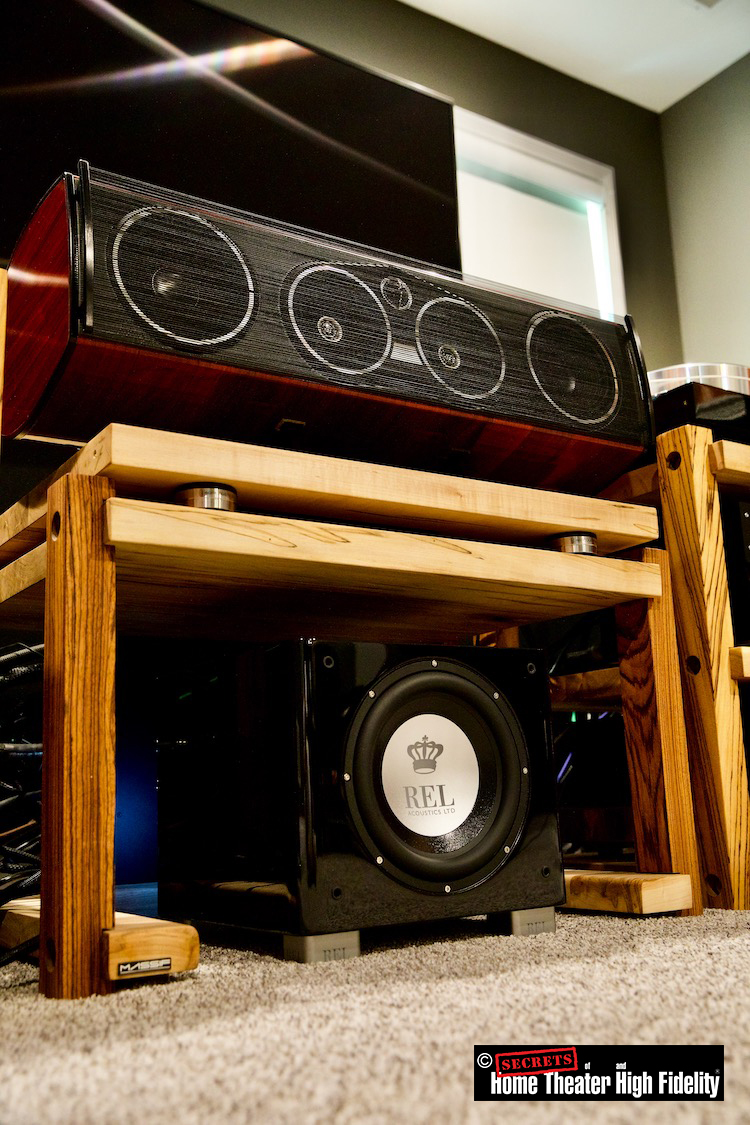 REL T/9x center-channel subwoofer
REL T/9x center-channel subwoofer
Regarding the rear of my theater, it now has a sense of space and dimension that I’ve never had before, even when I had multiple subwoofers back there. When full-range frequency scenes start at the back of the theater through the surround speakers, you can literally hear and feel it coming from behind you as it seamlessly transitions to the front, enveloping you in sound in the process. Bass now follows the scenes as if each speaker were full-range but better since even your above-average “full-range” speakers can’t reproduce low frequencies like a good subwoofer can.
And for the LFE signals engineered into the soundtrack, they now come from both front corners of the room, as well as behind me with the HT/1508 that is dedicated just for LFE.
With 5 of the REL subwoofers properly configured in my theater, I have no idea what I was listening to before because the presentation was that different. My system and room were very good, but the difference between good and great is vast.
REL has done a tremendous job of developing its subwoofers to operate off of high-level connections, which is really the key to making their 3D system work. Without having the ability to do that, and to accept RCA inputs for LFE at the same time, you just have a normal home theater experience. With this configuration, however, it transforms your system into something closer to a fully professional theater environment, and to what the recording studio engineers originally intended.
 My home theater featuring Sonus faber and REL
My home theater featuring Sonus faber and REL
In the past 7 years that I have been making changes and improvements to this system, in this room, I have never experienced the kind of positive transformation that I have by going with the REL 3D system. It doesn’t matter which amplifiers, processors, or speakers I have tried, the improvements have paled in comparison to REL 3D!
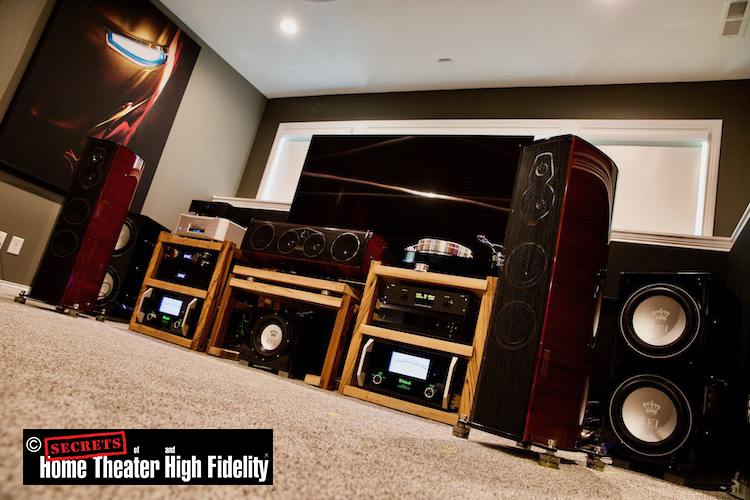 My home theater featuring Sonus faber and REL
My home theater featuring Sonus faber and REL
In the end, I purchased every single piece of gear from REL for the full-blown 3D treatment because there was no way that I was going back to the “old way” of incorporating subwoofers into a home theater environment!


